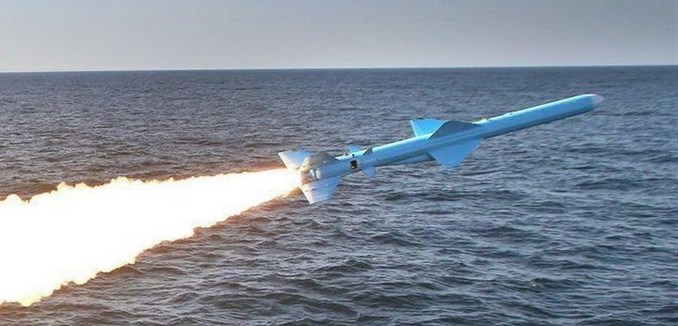Iran displayed a nuclear-capable ballistic missile during parades celebrating the country’s 1979 revolution over the weekend, reinforcing concerns that it is in violation of the United Nations Security Council Resolution implementing the nuclear deal, the Washington Free Beacon reported Monday.
The Ghadr (or Qadr) missile, according to Iranian military officials “can be launched from mobile platforms or silos in different positions and can escape missile defense shields due to their radar-evading capability,” according to accounts appearing in Iran’s state-controlled media. Israel is within the range of the missile when launched from Iranian territory.
“Thirty-nine years in, the Islamic Revolution has little to show for its decades in power other than growing the country’s asymmetric military capabilities in order to continue their export of the revolution,” Behnam Ben Taleblu, an expert on Iran with the Foundation for Defense of Democracies, said. “The Islamic Republic has considerably grown the country’s missile and rocket arsenal, both through production and procurement.”
Taleblu also told the Washington Free Beacon, “The Ghadr can strike Israel when fired from Iranian territory, and in March 2016, was flight-tested while bearing genocidal slogans against the state of Israel.” He was referring to a test launch of a missile that had the phrase “Israel must be wiped off the Earth,” written on it in Hebrew.
UN Security Council Resolution 2231 formalized the 2015 nuclear deal with Iran, “calls upon Iran not to undertake any activity related to ballistic missiles designed to be capable of delivering nuclear weapons, including launches using such ballistic missile technology.”
In December of last year, both France and Germany reiterated their opposition to Iran’s continued ballistic missile development and called on the Islamic Republic to give up “its hegemonic temptations.”
France and Germany joined the United States and the United Kingdom in August 2017 in sending a letter to UN Secretary General António Guterres, charging that Iran’s launch of a satellite violated resolution 2231.
President Donald Trump, in October 2017, said that he would not certify Iran’s compliance with the nuclear deal and demanded that four aspects of the deal be fixed or he would no longer waive the sanctions that were lifted as part of the accord. Trump has demanded that: new negotiations eliminate the sunset provisions of the deal that allow Iran to develop an industrial scale uranium enrichment program by the deal’s end, prohibit Iran from developing ballistic missiles, ensure “anytime, anywhere” inspections so that Iran will have to allow inspectors into its military sites, and target Iran for sanctions for its human rights violations and support for terror.
Although Iran insists that its ballistic missile program is purely defensive, in November 2017 Hossein Salami, the lieutenant commander of Iran’s Islamic Revolutionary Guard Corps (IRGC), threatened that if Europeans insisted on negotiating over Iran’s missile program, Iran would increase the range of the missiles to reach Europe.
Iran has tested ballistic missiles capable of reaching Israel and reportedly used a Star of David as a target for one of its ballistic missile tests.
A UN report last week found that Iran had supplied ballistic missiles to Houthi rebels in Yemen. This would be a violation of Resolution 2231, which also prohibits Iran from transferring weapons—both conventional weapons and ballistic missiles—to other countries.
[Photo: http://khabarone.ir]




